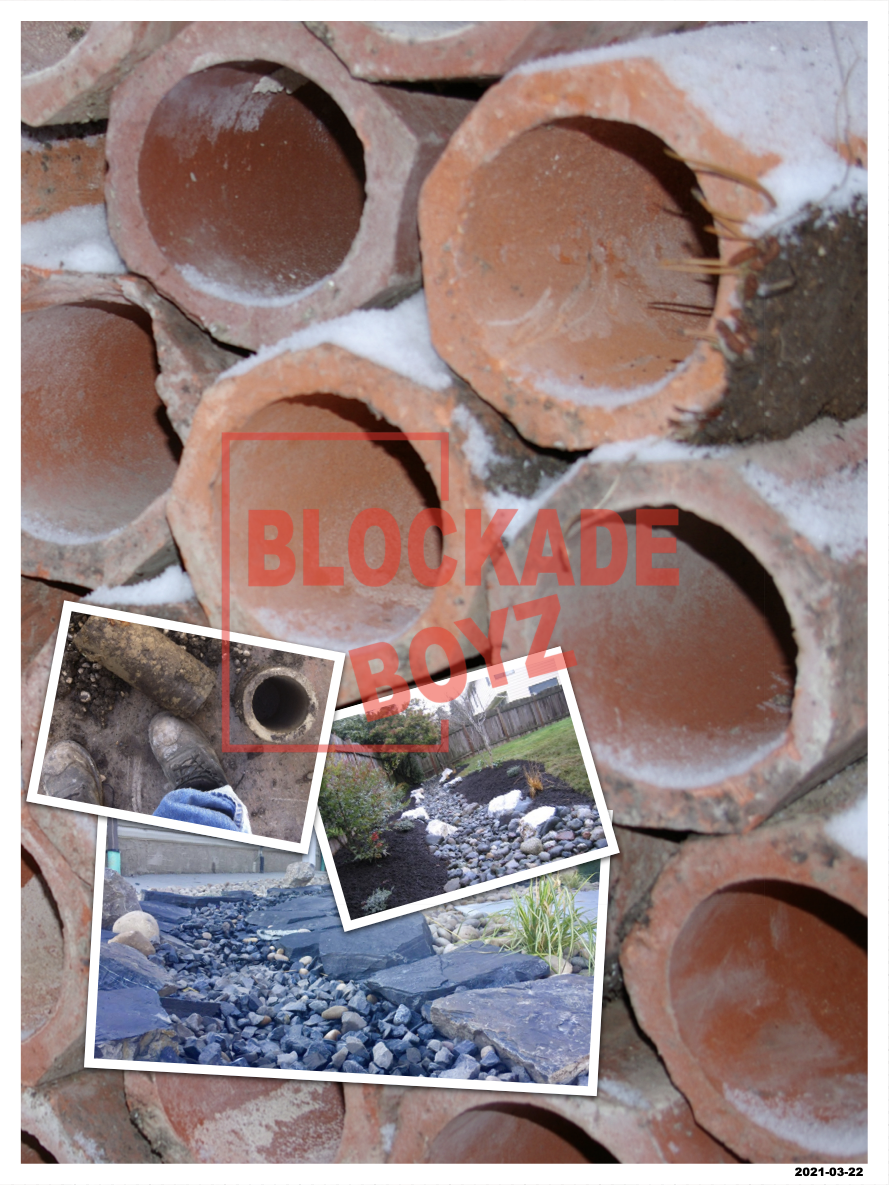
Definitions
These terms have become popular in the water management world for many reasons. But why are they called these names. Tongue in cheek yet accurate definitions.
Weeping Tile
The effects is what causes alarm. Listing a few:
Weeping tile makes me smile each time a client calls and say they need “weeping tile”. Many years ago, a nice lady took us around her home showing her problems and what she was concerned about in managing water. She had been told that she may need new weeping tile. During the site visit, on the deck were several boxes of porcelain tile. “I brought these from the garage, they were left over from the bathroom renovation.” She said; believing they were what made up “weeping tile”.
First off… “weep” is what people do once it’s determined they do not have any or what they have, failed.
Original weeping tile were a fired clay based pipe, 18 inches in length and laid end to end along the side of the footing. The top of pipe seams would have been covered with a piece of heavy asphalt impregnated building paper and then covered by a good layer of clean stone. The pipe ran the entire perimeter of the home and made to connect to a homes storm drain that would have gone out to the street and connected to the main storm drain. This technology has not really changed, other than
the material that is used for the drain. The drain tile no longer looks like a “Spanish” roof tile anymore bu the name stuck.
Swale
Swale… that is for sure a Scottish derived word “swaill” and of course the East Anglican had to change the spelling.
The definition stayed the same though, “low place” some confused it with “shady place” both are correct. Today we control the depth of the “swaill” and use it to direct grade water to a predetermined location. Better yet… a swale can be made in combination with a trench drain providing the depth and out fall does not impact negatively other areas of a property or someone else’s.
French Drains
As far a “French” drains are concerned… I personally know there was a communication problem when speaking with the first customer who documented the process. The man with the shovel likely was labouring hard in the hot sun and when ask what he called his system, the customer heard an “F” (could have been another word) when the man labouring to complete the job was clearly annunciating a “T” So trench became French.
This is why anyone who has dug a trench knows digging a true trench drain was not something the "French" could expropriate. Putting a tile pipe in the trench and filling it with clean gravel is a universal process… So! That is what a “Trench Drain” is.



